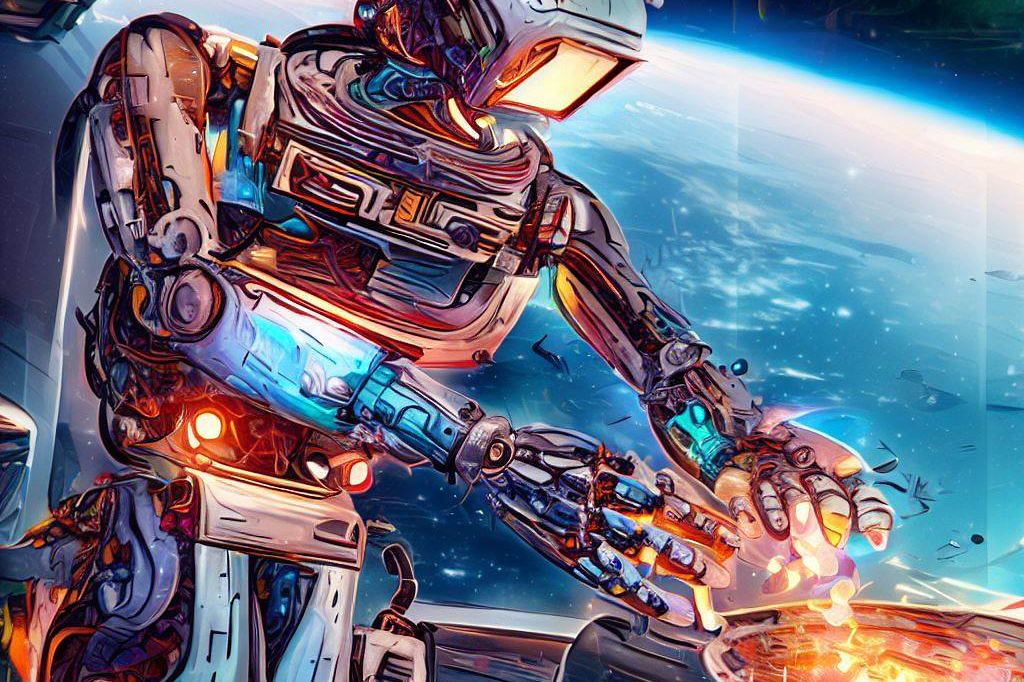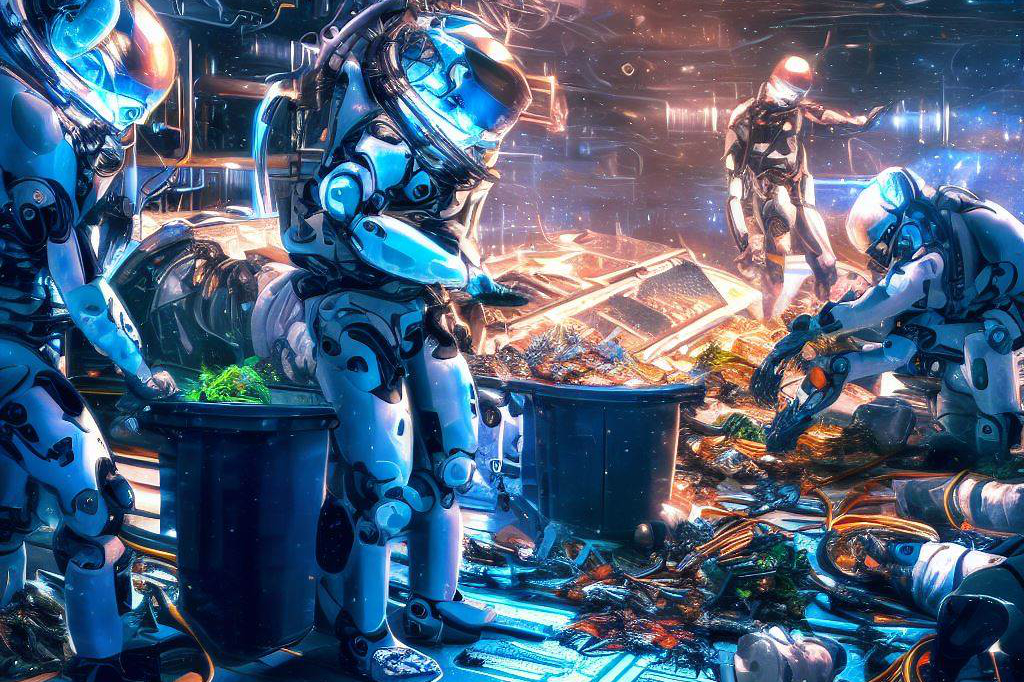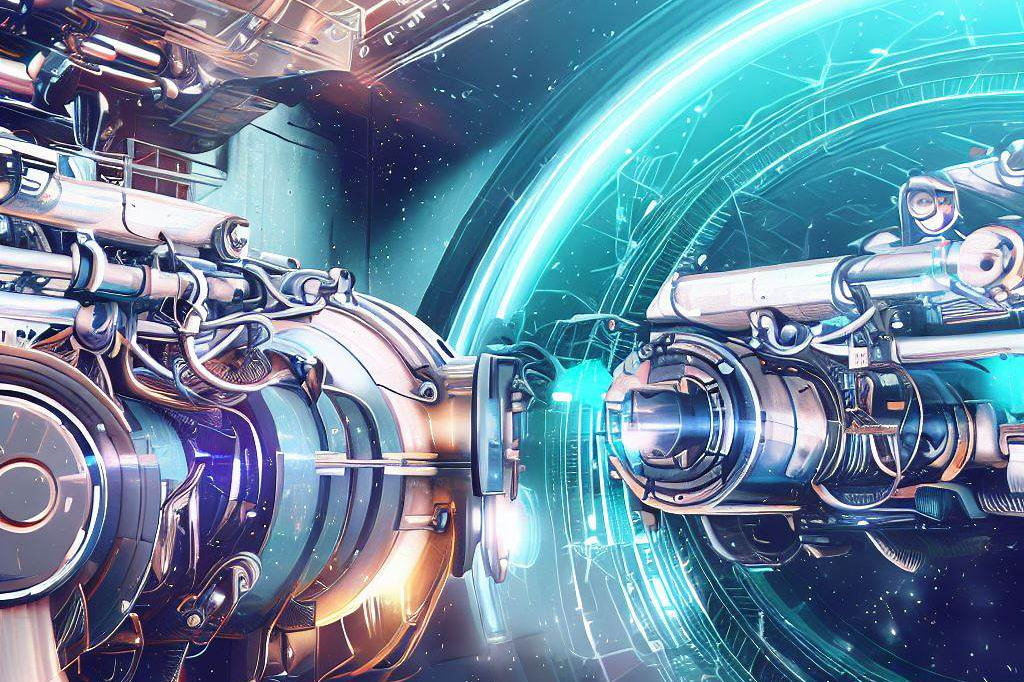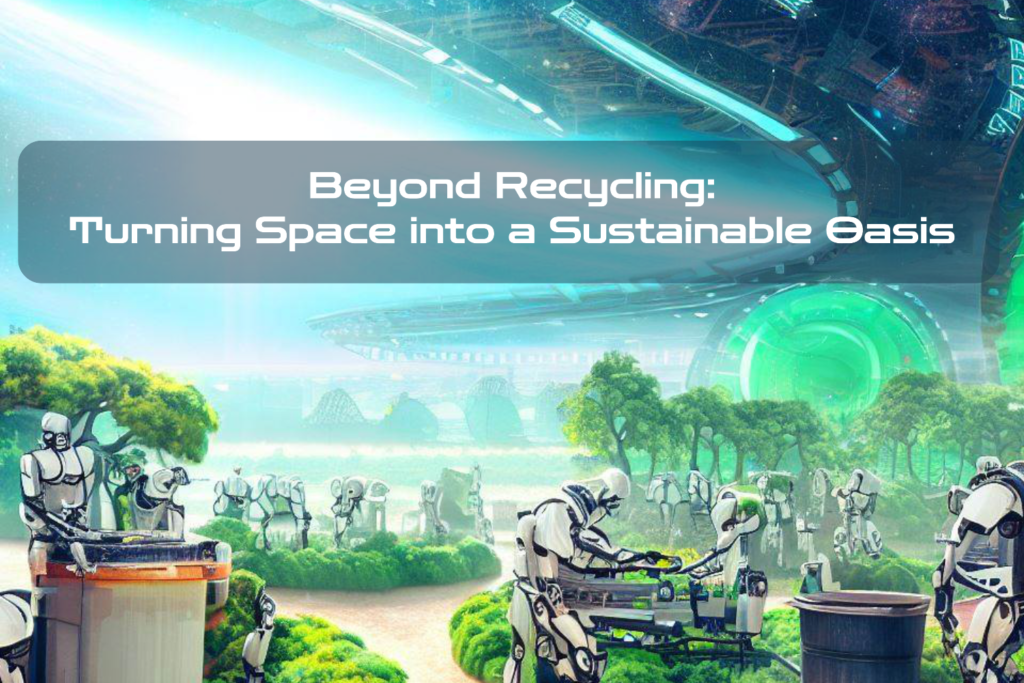A New Frontier: Space-Based Recycling and Upcycling
The idea of recycling and upcycling in space might seem like a foreign concept, but it’s becoming increasingly important as we continue to explore the final frontier. With human activities in space on the rise, we’re facing new environmental challenges that we’ve never encountered before. However, by implementing sustainable practices such as space-based recycling and upcycling, we can address these challenges while also conserving resources and reducing waste.
What is Space-Based Recycling and Upcycling?
When it comes to recycling in space, it’s a bit different than what we’re used to on Earth.
In essence, space-based recycling involves taking waste materials produced by humans in space – such as plastic packaging or metal scraps – and turning them into something useful once again.
Upcycling is similar to recycling but focuses on creating something new or better with the waste material rather than simply reusing it.
For example, using 3D printing technology, astronauts could turn plastic waste into new tools or even replacement parts for their spacecraft. This not only reduces the amount of waste that needs to be stored or discarded but also ensures that critical items can be replaced when needed without having to wait for delivery from Earth.
The Importance of Addressing Environmental Challenges in Space
While many people might think of space as being an infinite void with no environmental concerns, this simply isn’t true. In fact, humans living in space face unique environmental challenges that require sustainable solutions. For example, there are limited resources available – including water and air – so everything must be carefully conserved.
Additionally, any waste produced by humans must either be stored onboard or disposed of properly so as not to contaminate the environment around them. By implementing sustainable practices like recycling and upcycling in space-based operations, we can help preserve our universe and ensure that we have the resources needed for continued exploration and discovery.
Environmental Challenges in Space

Overview of the challenges faced by humans in space
Living in space is not only challenging but also has significant impacts on the environment. Humans living in space face numerous challenges, such as the lack of gravity, limited resources, and harsh weather conditions.
One of the most significant challenges that humans face while living in space is how to deal with waste products. Waste management is a critical issue for humans living in space.
Unlike on Earth, where waste can be buried or recycled, waste produced in space must be stored until it can be disposed of safely. This leads to overcrowding and limited storage capacity, which poses a risk to astronauts’ health and safety.
The impact of human activities on the environment in space
Human activities also have significant impacts on the environment in space.
For instance, spacecraft exhaust gases can affect the ozone layer in Earth’s atmosphere. In addition, rocket launches contribute significantly to global warming by emitting large amounts of carbon dioxide into the atmosphere.
Another impact is that human activities produce a lot more heat than what nature would have done if left alone—this creates unique climatic conditions that could cause problems for astronauts who are not adequately protected from extreme temperatures or radiation. Human activity has directly impacted certain celestial bodies like our Moon and Mars by leaving behind litter and debris from previous missions – this garbage can cause long-term environmental damage to these locations if left unchecked.
The environmental challenges facing humans living in space are numerous and require innovative solutions for their mitigation. Failure to address these issues could lead to severe consequences for both those living within our solar system and those here on planet Earth.
The Advantages of Space-Based Recycling and Upcycling

Space-based recycling and upcycling are processes that involve transforming waste materials into new products or reusing them in their current state. The benefits of these practices in space are numerous, as they help reduce waste, conserve resources, and promote sustainability.
Reduced Waste
In space, every resource is valuable. Implementing recycling and upcycling practices ensures that waste materials are not simply discarded but rather repurposed for future use.
This helps reduce the amount of waste generated by humans living in space, which can be a significant problem due to limited storage space and the cost of transporting waste back to Earth. For example, food packaging is a common source of waste on spacecraft.
By using biodegradable materials or reusable containers instead, it’s possible to significantly reduce the amount of trash generated by food consumption. These materials can then be recycled or repurposed into other products.
Resource Conservation
In addition to reducing waste, space-based recycling and upcycling also help conserve resources. Because it’s expensive and difficult to transport materials from Earth to space, it makes sense to use existing resources as much as possible.
For example, water is a critical resource in space that must be conserved carefully. By implementing water purification systems that recycle wastewater for future use, astronauts can ensure they always have access to clean water without having to rely on costly resupplies from Earth.
Promoting Sustainability
The principles of sustainability are essential in any environment where resources are limited or finite – particularly when those resources must be shared among multiple parties. Implementing recycling and upcycling practices encourages a circular economy where waste is minimized and every resource has value.
While space-based recycling and upcycling are still in their early stages, the benefits of these practices are clear. By reducing waste, conserving resources, and promoting sustainability, we can help ensure that humans can continue to thrive in space for generations to come.
Current Efforts Towards Space-Based Recycling and Upcycling

Overview of Current Initiatives
One of the most significant space-based recycling projects that has been implemented is the Water Recovery System (WRS) on the International Space Station (ISS). The WRS recycles wastewater from various sources on the ISS, such as urine and humidity condensate, into clean drinking water. Implementing this system not only decreases waste in space but also reduces the amount of water that needs to be transported from Earth to the ISS.
Another example is NASA’s Refabricator, a recycling and upcycling device that can transform plastic waste into 3D printing filament. This device has already been tested successfully on board the ISS and could potentially eliminate much of the plastic waste generated during long-duration missions.
Examples of Successful Recycling/Upcycling Projects Already Implemented
In addition to these efforts, there have been other successful recycling and upcycling projects in space. For instance, astronauts aboard the ISS have repurposed cargo bags into radiation shields for sensitive equipment.
These bags were no longer needed after delivering supplies to the station, so rather than disposing of them as waste, they were reused in a creative way. Another project involved converting used clothing into insulation material for spacecraft.
The insulation was made by shredding garments and then compressing them into flat sheets that can be cut to size to fit specific areas within a spacecraft. This not only reduces waste but also saves valuable storage space on board.
As we continue to explore space and spend more time living in it, it’s crucial that we find ways to reduce our environmental impact while still meeting our needs. Thanks to these current initiatives and successful projects already implemented, we are taking steps towards a more sustainable future in space.
Technical Innovations for Space-Based Recycling and Upcycling

Innovative Recycling and Upcycling Technologies
With limited resources in space, recycling and upcycling technologies play a crucial role in ensuring sustainable habitation. As humans continue to explore space, there are technical innovations emerging towards improving recycling/upcycling processes. One such innovation is the use of 3D printing technology, which is being used to create new objects from recycled materials.
This technology can reduce the amount of waste generated by space missions and conserve resources by creating new tools from existing ones. Another innovative solution is the use of bioreactors to convert human waste into useful products such as food or oxygen.
This process not only reduces waste but also provides a renewable source of food and oxygen that can support long-term missions in space. Such bioreactors could be used to grow plants or algae that absorb carbon dioxide and release oxygen, thereby improving air quality in enclosed environments like spacecraft.
The Benefits of Closed-Loop Systems
One key challenge faced by humans living in space is that they cannot rely on resupply missions for essential supplies like water or air filters. In response, closed-loop systems have been developed that recycle water and reprocess air during long-duration missions. These systems allow for efficient resource utilization since they minimize reliance on external supplies from Earth.
Moreover, closed-loop systems not only provide astronauts with the necessary resources but also reduce the amount of waste produced by space missions since there are no disposable parts involved. They help reduce the need for supplies launched into space, which can lead to cost savings over time.
Nanotechnology Solutions
Nanotechnology has emerged as an innovative solution for addressing the unique challenges faced by humans living in space. One area where nanotechnology has shown potential is water filtration through nano-membranes that effectively filter out bacteria, viruses, and other contaminants.
These membranes can also be used to recycle and purify wastewater for reuse. Nanotechnology solutions can also improve the efficiency of solar panels used in space by increasing their surface area with nanoscale coatings.
Such coatings can help increase the efficiency of solar cells while reducing their weight, which is a crucial factor in space missions where every kilogram counts. Technical innovations have great potential to improve recycling and upcycling processes in space.
From 3D printing to closed-loop systems and nanotechnology, these solutions have the potential to address unique challenges faced by humans living in space. With continued research and development towards improving these technologies, we can ensure a sustainable future for humans exploring new frontiers beyond Earth.
Future Possibilities for Space-Based Recycling and Upcycling

Exploration into potential future opportunities for improving recycling/upcycling practices in space
As technology continues to advance, the possibilities for space-based recycling and upcycling are virtually limitless. One exciting possibility is the use of 3D printing technology to create new objects from recycled materials. This could lead to a closed-loop system where waste is recycled and transformed into new products on demand, greatly reducing the need for costly resupply missions from Earth.
Another promising development is the use of biological systems such as algae or bacteria to break down waste products into their component parts, which can then be used to create new materials. The ability to produce food, medicine, and other essential items using these techniques could greatly increase the sustainability of human activities in space.
How these advancements could benefit both humans living in space as well as those living on Earth
In addition to benefiting humans in space by reducing waste and increasing self-sufficiency, advances in space-based recycling and upcycling could also have far-reaching benefits for those living on Earth. By developing more efficient and sustainable ways of using resources in space, we can learn valuable lessons about resource management that can be applied back on Earth. Furthermore, many of the technologies developed for use in space can also have applications here on Earth.
For example, 3D printing technology has already been used to create prosthetic limbs and medical implants. As we continue to push the boundaries of what is possible in space-based recycling and upcycling, it is likely that we will discover even more ways that these innovations can benefit humanity as a whole.
Final Thoughts
The challenges faced by humans in space are immense, but they also present an opportunity for us to develop new technologies and techniques that can benefit us both here on Earth and in space. By implementing more efficient recycling and upcycling practices, we can reduce waste, conserve resources, and create a more sustainable future for ourselves and our planet. Whilst the challenges are significant, the possibilities are endless, and by working together, we can achieve great things.

C M, a seasoned editor, journalist, and consultant, is deeply fascinated by the convergence of technology, space, and the future of humanity.
With a particular interest in transhumanity, futurology, and the philosophical and ethical dimensions of these domains, C M serves as the lead contributor to SpaceSpotlight and TranscendSphere.
When not penning insightful articles on these rapidly evolving fields, C M indulges in their love for podcasts and books, proudly embracing their status as a ‘Happy Nerd Extraordinaire!’



